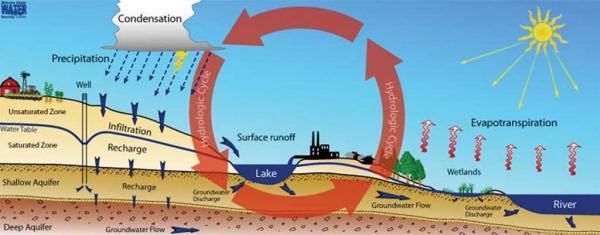Research shows global groundwater recharge rates to be underestimated
12 Jan 2023 by The Water Diplomat

A paper published in Geophysical Research Letters on the 29th of November has shown that global groundwater recharge rates are much higher than previously thought. Groundwater is an important source of freshwater, especially in arid areas, it is used for around 40% of global irrigation, and is often used as an important source of drinking water in urban areas. However, accurately measuring groundwater recharge rates is a challenging task, and as a result, it is difficult to estimate sustainable levels of withdrawal.
The researchers – a team led by Wouter Berghuijs at the Free University of Amsterdam – analysed a synthesis of recharge measurements from 5237 sites spread across the world (but excluding Antarctica) which cover the period between 1968 and 2018. The authors immediately acknowledge that the diversity of landscapes and climates across the world result in a huge variation in groundwater recharge rates – in fact the recharge rates differ from each other by several orders of magnitude. And although groundwater recharge is affected by a large range of factors such as climate, landscape, vegetation type and cover, and the nature of the surface on which precipitation falls, the authors show that climate aridity is a dominant factor in determining the rate of recharge. In humid areas, typically, more precipitation is converted into groundwater than in arid areas. Groundwater recharge is low across roughly one half of earth’s surface, as drylands are prevalent across all continents except Europe. Recharge rates are highest in wetter areas and coastal regions in Central and North America, Europe and Oceania. In addition, crucially, the research shows that the recharge rates observed in the study more than double recharge rates estimated in a number of global recharge models. Therefore, groundwater’s role in the global water cycle is larger than previously suggested.
